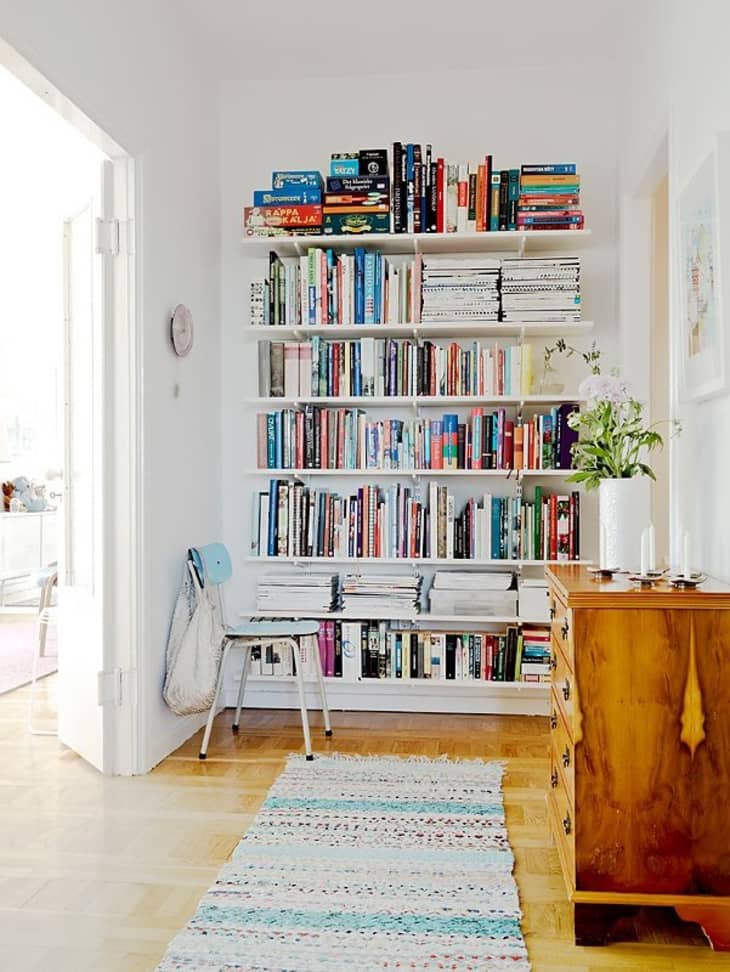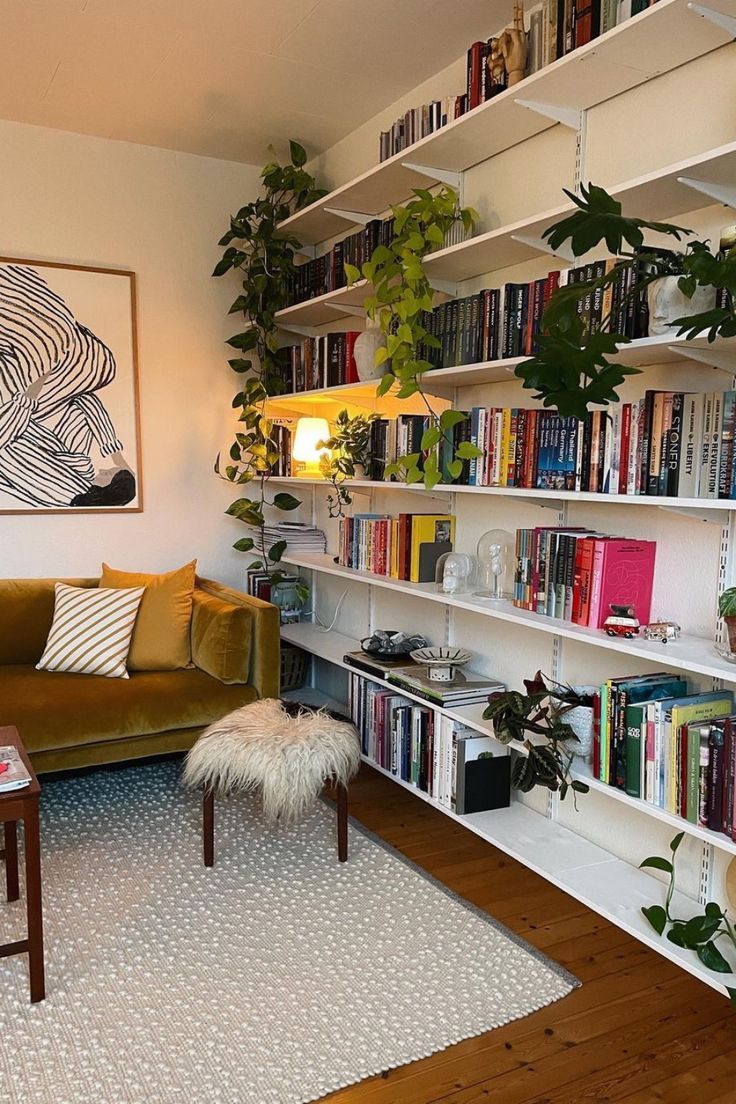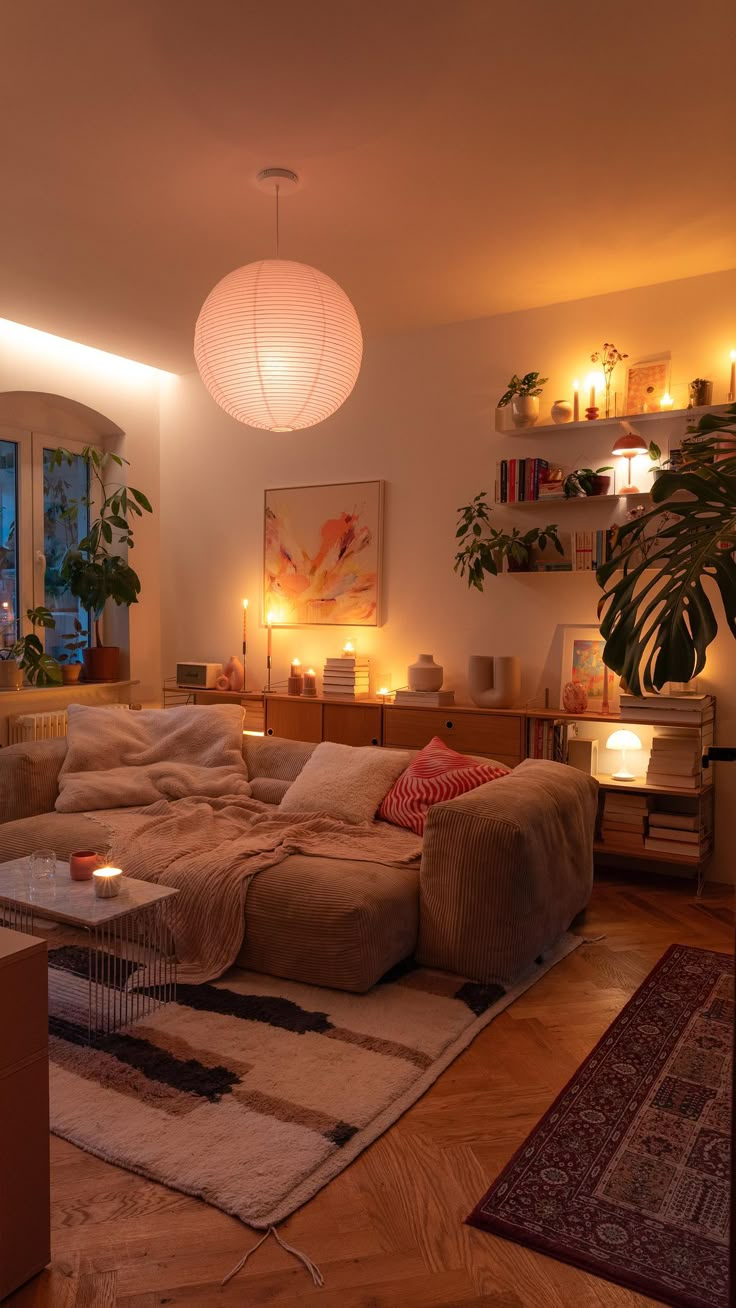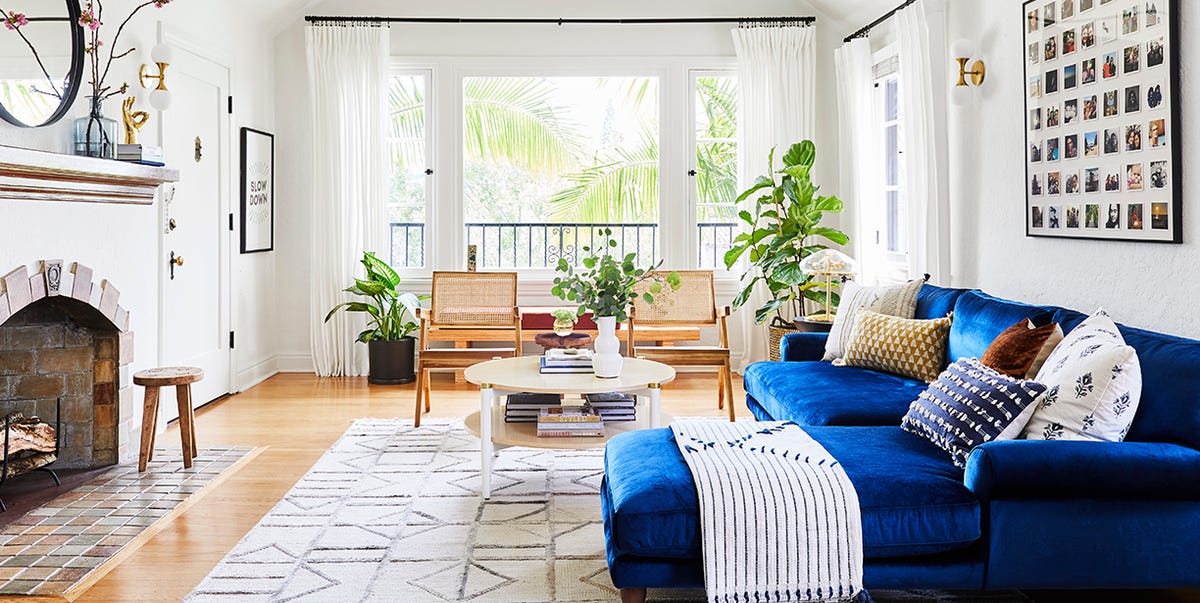
Using Bookshelves for Wall Soundproofing
Filled bookshelves add mass and air gaps to shared walls, absorbing sound energy. Position heavy units against noisy walls, fill every shelf, and leave a small gap for additional sound isolation. This method is lease-compliant and improves acoustics.
Quick Fix

DIY Fabric-Wrapped Acoustic Panels
Create removable sound-absorbing panels with wood frames, insulation, and decorative fabric. Hang with Command strips or picture rail hooks. These panels reduce echo and absorb mid-to-high frequency noise from voices and media.
Reversible

Tapestries and Heavy Wall Hangings
Thick tapestries, quilts, and canvas art absorb sound waves and add visual warmth. Hang them on shared walls with damage-free hooks. This quick, low-cost solution works especially well for reducing echo in hard-surfaced rooms.
Low-Cost

Acoustic Foam vs. Fabric Panels
Acoustic foam excels at absorbing high frequencies but does little for bass or impact noise. Fabric panels offer broader frequency absorption and look better in living spaces. Learn when to use each, how to install safely, and which is more rental-friendly.
Quick Fix

Strategic Furniture Placement
Place sofas, wardrobes, and tall dressers against shared walls to create a buffer zone. Upholstered furniture absorbs more sound than hard wood pieces. This guide shows optimal spacing and arrangement for noise reduction without sacrificing layout function.
Low-Cost

Picture Rail Isolation Tricks
Hang heavy frames, mirrors, or fabric-wrapped boards from picture rails to avoid drilling into walls. This creates a small air gap that disrupts sound transmission. Ideal for older buildings with existing rail systems.
Reversible

What NOT to Do to Rental Walls
Never drill large holes, attach permanent materials, or attempt to open wall cavities in a rental. Avoid spray foam, construction adhesive, or any modification to fire-rated assemblies. This guide clarifies lease restrictions and strata rules.
Courtesy







